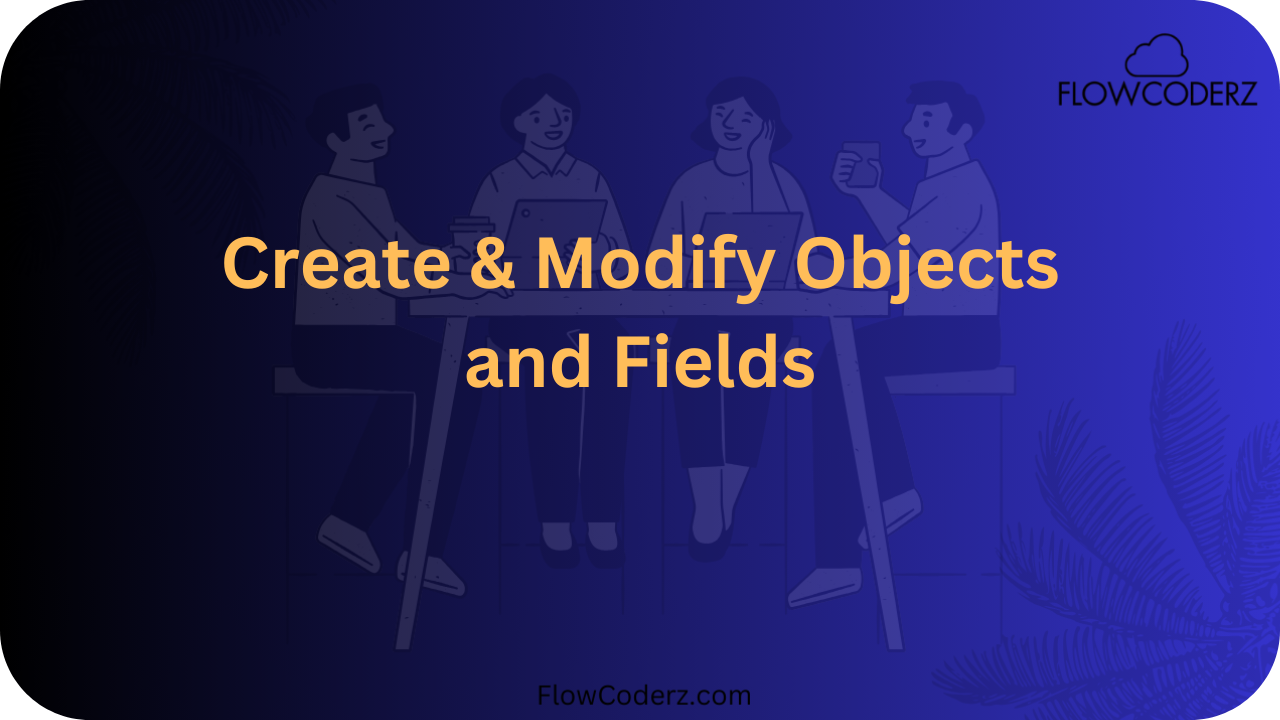When working with Salesforce, one of the most powerful tools at your disposal is the Schema Builder. It provides a visual way to create, modify, and understand the relationships between objects and fields in your Salesforce org — all in one place.
In this blog, we’ll explore:
- What Schema Builder is
- How to create a new object
- How to add fields to objects
- How to modify existing objects and fields
- Benefits of using Schema Builder
What is Schema Builder in Salesforce?
The Schema Builder is a dynamic, interactive tool that lets you visualize and modify your data model directly from the Salesforce UI.
Instead of navigating through multiple pages in Object Manager, you can manage everything — objects, fields, and relationships — in a single canvas view.
It’s perfect for Admins, Developers, and Architects who want to see how data flows through Salesforce.
How to Open Schema Builder
- Go to Setup → in the Quick Find box, type Schema Builder.
- Click Schema Builder under Objects and Fields.
- The Schema Builder interface will appear — showing a canvas with objects and their relationships.
You can zoom in/out, drag objects around, and even filter which objects are visible.
Creating a New Object in Schema Builder
Creating a new object is very simple:
- In Schema Builder, click Elements (on the left panel).
- Under Elements, find and drag New Object onto the canvas.
- A pop-up window appears — fill in the required details:
- Label: Name of the object (e.g., “Project”).
- Object Name: API name automatically gets created.
- Record Name: Field label (e.g., “Project Name”).
- Data Type: Choose between Text or Auto Number.
- Optional Settings: Allow Reports, Activities, Track Field History, etc.
- Label: Name of the object (e.g., “Project”).
- Click Save — your new object now appears on the canvas!
Adding Fields to an Object
After creating your object, you’ll want to add fields to store data.
- From the Elements tab, drag a field type (e.g., Text, Number, Date, Lookup) onto your object on the canvas.
- A dialog box will appear asking for:
- Field Label
- Field Name (API name auto-generates)
- Data Type settings (like length or precision)
- Field Label
- Click Save — the new field will appear immediately under the object.
You can create any field type supported in Salesforce:
- Text
- Number
- Checkbox
- Date/Time
- Picklist
- Lookup Relationship
- Master-Detail Relationship
Modifying Existing Objects and Fields
Schema Builder also allows you to make quick changes without going back to Object Manager.
To modify a field or object:
- Click on the field name or object name on the canvas.
- A property panel opens, allowing you to:
- Change the field label or data type
- Set field-level security
- Add or remove help text
- Adjust required or unique settings
- Change the field label or data type
- Click Save to apply your changes.
Similarly, you can modify object-level details like description, record name type, and tracking settings.
Benefits of Creating and Modifying in Schema Builder
- Visual Data Modeling: Easily see how objects relate to each other.
- Faster Development: No need to navigate through multiple setup pages.
- Real-Time Updates: Changes reflect immediately in your org.
- Drag-and-Drop Simplicity: Perfect for admins with minimal coding skills.
- Error Reduction: Easy to identify incorrect or missing relationships.
Limitations of Schema Builder
- Some settings like validation rules, formula fields, or triggers still require Object Manager.
- Complex automation (flows, processes) cannot be built from Schema Builder.
- It may load slowly in orgs with hundreds of objects or relationships.
Conclusion
The Schema Builder is one of Salesforce’s most powerful admin tools.
It enables you to create, view, and modify objects and fields visually, making data modeling more intuitive and less time-consuming.
By mastering Schema Builder, you can streamline your org setup, improve data architecture, and ensure your Salesforce environment stays clean and efficient.
Next time you need to add or modify a field, try doing it through Schema Builder — you’ll see how visual data modeling makes Salesforce customization faster and easier!

